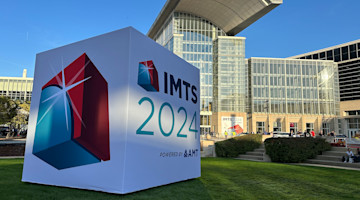From the early oil fields in Pennsylvania to the hydroelectric generators built into the Hoover Dam, energy has been both a critical input to American manufacturing as well as a vital customer of manufacturing technology itself. While generally not one of the major consumers of manufacturing technology in a given month, the energy sector has been a steady customer, and several interesting buying patterns have emerged. This article will look at two of the most reliable consumers of manufacturing technology in the energy industry, the oil and electricity sectors, and examine historical trends and some recent developments that have impacted investment in new machinery.
Oil Sector
Oil is the primary source of energy for multiple modes of transportation. Gasoline and jet fuel account for most of the output of a barrel of oil – nearly three quarters between them. The relationship between the price of oil and the industry’s demand for manufacturing technology has shown some divergent trends in the past. As oil prices rise, it takes some time for orders of manufacturing technology to also increase. It took a steady increase in the price of oil from January 2002 until mid-2005 before manufacturing technology orders increased at a much faster pace. Conversely, as oil prices drop, orders of manufacturing technology decrease rapidly. The price of oil lost more than half its value between July 2014 and January 2015, which led to a falloff in manufacturing technology orders to levels lower than the 2008 financial crisis. This pattern makes sense because producers need to see sustained increases in the price of oil to justify investing in more capacity. As the price drops, producers can forego additional investments and work with existing machinery at lower utilization rates.
Just prior to the COVID-19 shutdown and recession, orders of manufacturing technology from the oil industry were on a downward trend. Orders began to grow at a modest pace in early 2021; however, they began to slow again around October 2022. This low order activity was despite a near seven-fold increase in the price of oil. Rapidly rising interest rates and an administration perceived by the oil industry as unfriendly have likely caused some hesitation in the decision to invest in additional manufacturing technology in recent years.


Electric Sector
Electric generation and distribution gained a lot of attention recently as electric vehicles became more popular, state and federal governments targeted funding at new energy projects, and grid reliability was threatened in multiple locations from extreme weather. There were two distinct spikes in orders of manufacturing technology from manufacturers of engines, turbines, and other power transmission technologies. The first began in late 2007 and peaked in summer 2008. This increase in orders coincided with the beginning of the transition from coal-fired power plants to ones run primarily on natural gas. In 2008, nearly half of all electricity generated came from coal. As of 2022, that number fell to less than 20%, with natural gas making up nearly 40% of electricity produced. The second major spike occurred in early 2023 and continues to push demand on an upward trend that we still see in the data today. As of August 2023, 36 states plus Washington, D.C., have enacted clean or renewable energy standards, which should spur more investments like the transition from coal to natural gas did. As of 2022, about 21% of electricity came from renewable sources, with most coming from wind sources, followed closely by hydroelectric.
Investments Ahead
The buying patterns of the oil and electricity sectors have changed over time and have historically been dependent on many outside factors. Government investment made in the last few years should begin to come online in the coming months and years, spurring demand for manufacturing technologies. While most of that spending may not have been fully seen in orders for manufacturing technology, recent extreme weather has accelerated orders for technology to help strengthen and improve the electric grid. Given the trends seen in the first half of 2023, the energy sector is likely to remain an important customer for manufacturing technology.
To read the rest of the Energy Issue of MT Magazine, click here.





